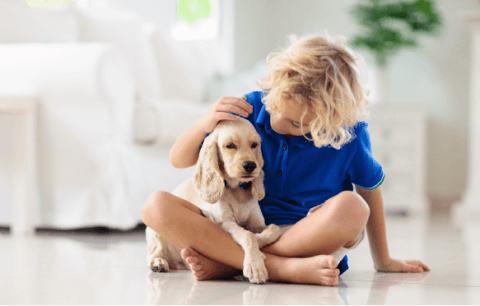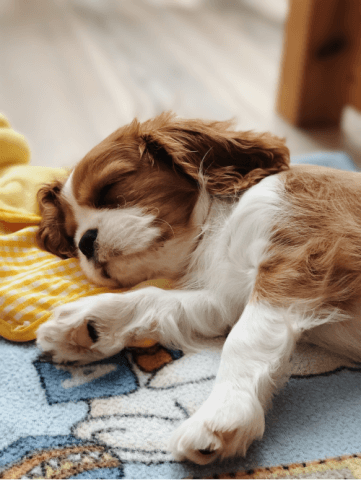Do you know the symptoms of puppy separation anxiety?
Read on to learn more about symptoms and how to prevent separation anxiety in puppies.




Puppy separation anxiety is a clinical disease that can be diagnosed and treated by your veterinarian or a behaviour veterinarian. Some signs of puppy separation anxiety include excessive howling, barking, whining and pacing. Puppies and dogs may become destructive and engage in behaviours such as digging and chewing furniture. While we may find these behaviours annoying, if your dog or puppy is doing this, it is because they are distressed.
Understanding the root cause of separation anxiety in puppies or dogs can be quite complex, as it can stem from a number of factors. As you start to flesh out how to look after your puppy, it helps to recognise common triggers that can lead to this condition, including:
Do you know the symptoms of puppy separation anxiety?
Read on to learn more about symptoms and how to prevent separation anxiety in puppies.



The symptoms of separation anxiety in dogs and puppies can vary significantly in both intensity and frequency. Some dogs may display only one or two signs, while others may exhibit a mixture, including:
Helping puppies with separation anxiety is far more effective when you get ahead of the problem, and this starts with early puppy separation training by teaching your puppy how to be alone. As you integrate more methods on how to train a dog into their schedule, this might involve gradually getting the puppy accustomed to being alone, providing ample physical and mental stimulation, and establishing a predictable routine.
CAN-0043-2023
Can a puppy have separation anxiety?
Yes, puppies, much like adult dogs, can experience separation anxiety. The transition from being with their littermates and mother all the time to being alone can be quite stressful for them without the proper preparation and training.
How can I help my puppy with separation anxiety?
Start by taking your puppy to your vet to discuss your concerns. They can diagnose and recommend options to manage the condition, or they may refer you to a behaviour veterinarian for help.
Will my puppy outgrow separation anxiety?
Separation anxiety is a clinical disorder and it is unlikely that your dog will grow out of it. Expecting them to grow out of it and leaving them alone regularly may exacerbate the problem. If you suspect your dog has separation anxiety, please consult with your veterinarian.
RELATED ARTICLES


Learn about the importance of puppy school and when to start. Find out more about what to expect at puppy school, from training to advice on puppy care.
House training or toilet training a puppy can be a challenging task. NexGard has a guide that can help with toilet training your puppy. Click here to learn more.


There are several factors to consider when it comes to safely taking your puppy for a walk. Click here to learn more!
Copyright and Trademark Notice
NEXGARD SPECTRA®, NEXGARD®, HEARTGARD30® and PARAGARD® are registered trademarks of the Boehringer Ingelheim Group.
©2021-2023 Boehringer Ingelheim Animal Health Australia Pty. Ltd. All rights reserved. PET-0228-2022 PET-0203-2023